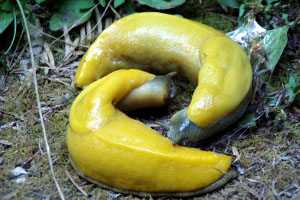 Banana Slugs are hermaphrodites, which means they are an animal that has both female and male reproductive parts
Banana Slugs are hermaphrodites, which means they are an animal that has both female and male reproductive parts
Forty and Fabulous is the theme for Pride this year. San Francisco’s Pride Celebration and Parade has been going strong since 1970. Pride recognizes and celebrates the diversity that has put San Francisco on the map. NightLife at the California Academy of Sciences kicked off the Pride weekend with some help from Juanita MORE, Verasphere, SF Cheer and Jane Tollini. In prepping for the festivities and specifically Jane Tollini’s talk – “How Animals Get Down”, I had to research a specific Academy animal and its claim to fame.
Below are a few of the tidbits I’ve learned about in my tenure at the Academy which prove equally intriguing:
The most popular docent cart at NightLife is the baculum cart. Baculums are penis bones that are found in most mammals. They range in sizes depending on the mammal and aid in sexual intercourse. One of the largest Baculums belong to the walrus and Alaskan native Americans would polish and carve these baculums for clubs or knife handles. They are known is there culture as Oosik.
Banana Slugs are hermaphrodites, which means they are an animal that has both female and male reproductive parts. In some cases of mating, a male reproductive member will become stuck; if this happens it is chewed off and discarded; thus making the slug a female.
